Pen to Printer: The 2014 Edward Johnston Foundation Seminar
Signwriting history, calligraphy, stone carving and ghost signs at Edward Johnston Foundation Seminar.
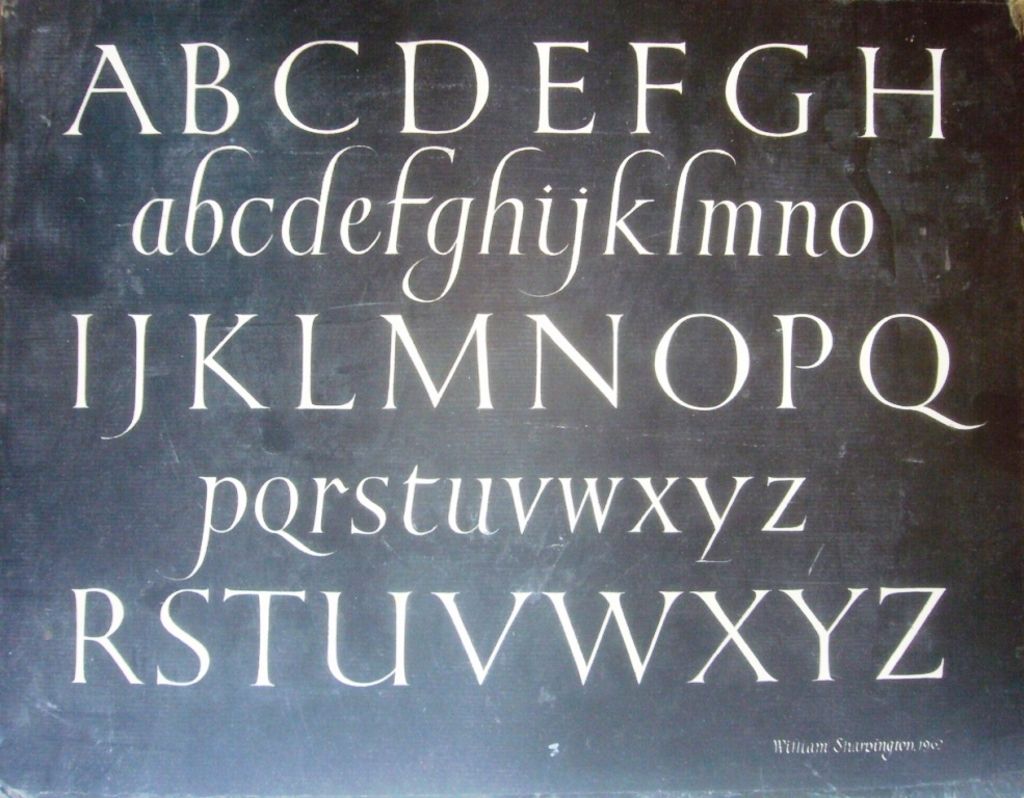
Over the weekend I traveled to Ditchling to attend, and speak at, the 14th Edward Johnston Foundation (EJF) Seminar. This is a coming together of lettering artists, students and academics to learn and share knowledge.
This premise for the event aligns directly with that of the Letterheads meet I attended last month. The difference is in the disciplines represented at each event, the Letterheads being grounded in the work of signwriters/painters and the EJF having more of a calligraphy and stone carving focus. While both groups have a shared love for letters and lettering, it is surprising how little overlap of activities and interaction is evident.

The EJF exists to celebrate, research and raise awareness of calligraphy and the lettering arts, with its basis in the work, legacy and influence of Edward Johnston. Most famous for his work designing the London Underground typeface (and roundel), Johnston was pivotal in the revival of calligraphy at the start of the last century and wrote one of the classic texts, Writing and Illuminating, and Lettering.
Johnston's grandson, Andrew Johnston (above), gave the keynote talk at the seminar. This told the story of Johnston’s journey across the USA in the late 1800s and how this came to influence his outlook and character. It was a fascinating introduction to Edward Johnston the man, and had a fair quantity of archival photographs of the USA, including many with pieces of signage and other lettering in the background.
Other talks across the weekend included: Will Hill‘s investigation into the history and purpose of the ligature within typography; Paul Shaw on the calligraphic book jackets of George Salter and Phil Grushkin; Colin McHenry on how to get a career in graphic design; and, of course, me sharing my work on Ghostsigns.
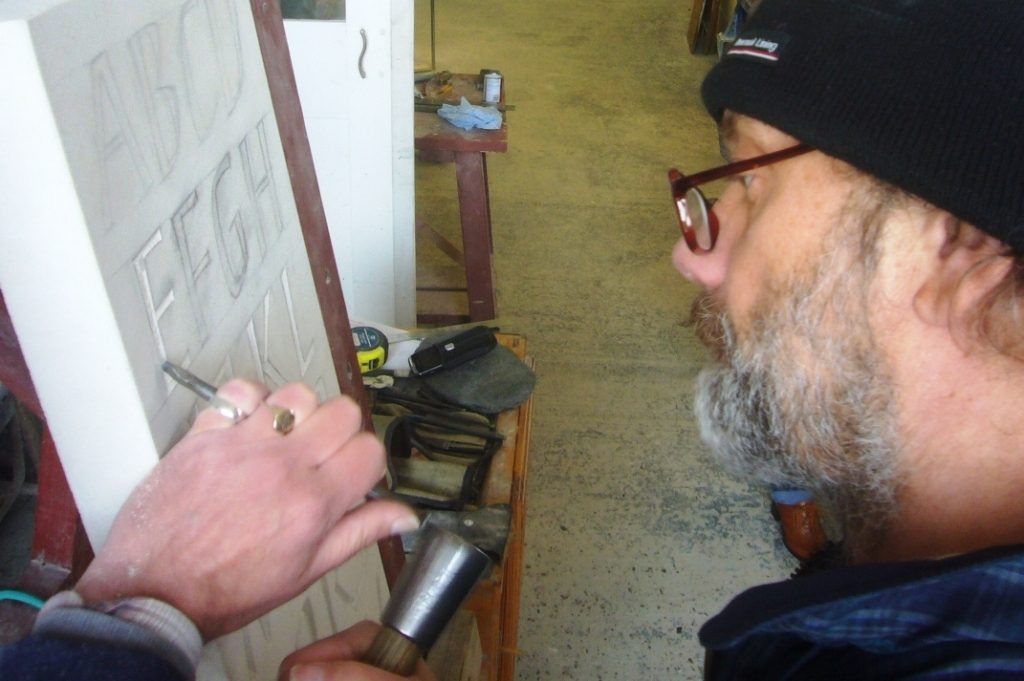
In addition to the various talks across the weekend there were a number of practical demonstrations of different lettering arts. These opened on the Friday evening with Chris Elsey talking through the process of letter cutting in stone. Above is him working on an alphabet, a detail below.
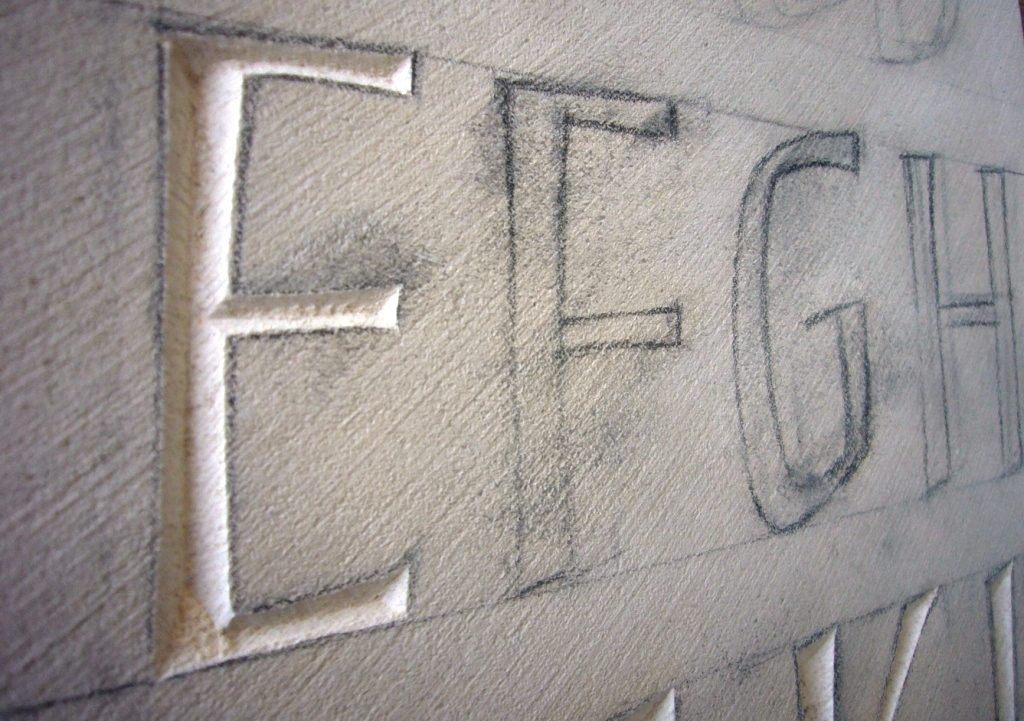
There was also an exhibit of various items from the EJF collections. These contained some stunning examples of brush, pen and carved lettering and the pieces on show were a mixture of commissions and self-initiated projects. Among the calligraphy and stone cutting work I saw there were many that featured quotes from poetry, influential figures and other texts. The piece below, by John Nash, is a comment from calligrapher Ann Camp, sounding a warning about the future direction of the crafts movement.
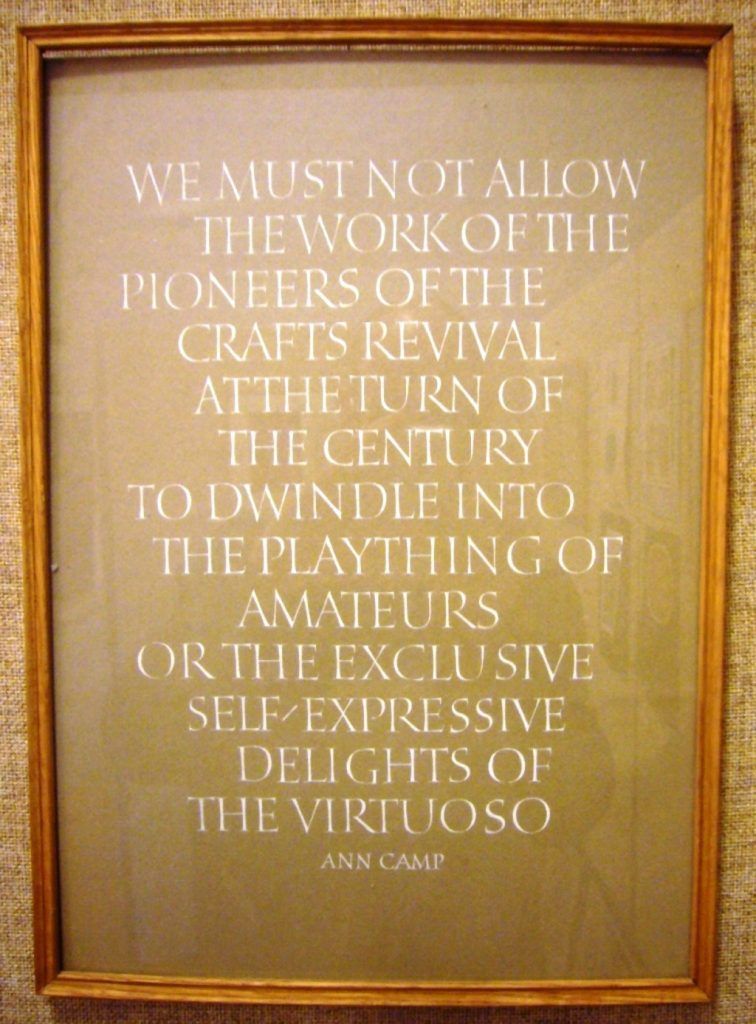
This piece is by Kenneth Breese from 1997.
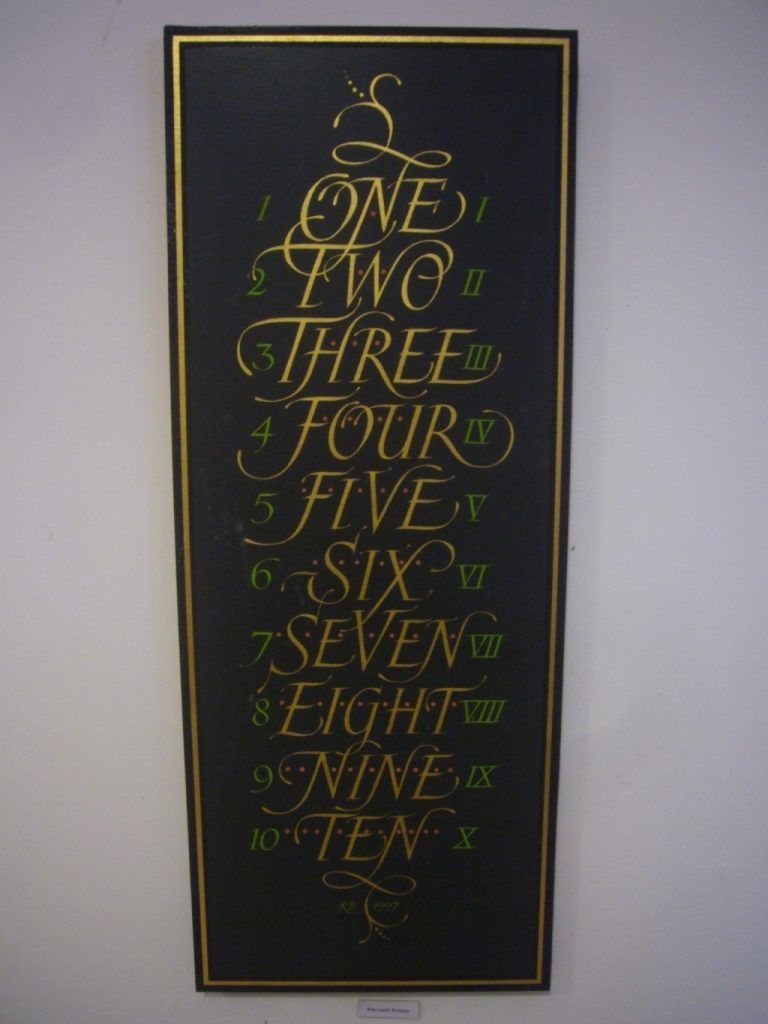
Kenneth Breese was a renowned signwriter and lettering craftsman. His signwriting kit was on display, alongside a number of other pieces of note from him and his teacher William Sharpington who, in turn, was trained by Edward Johnston.
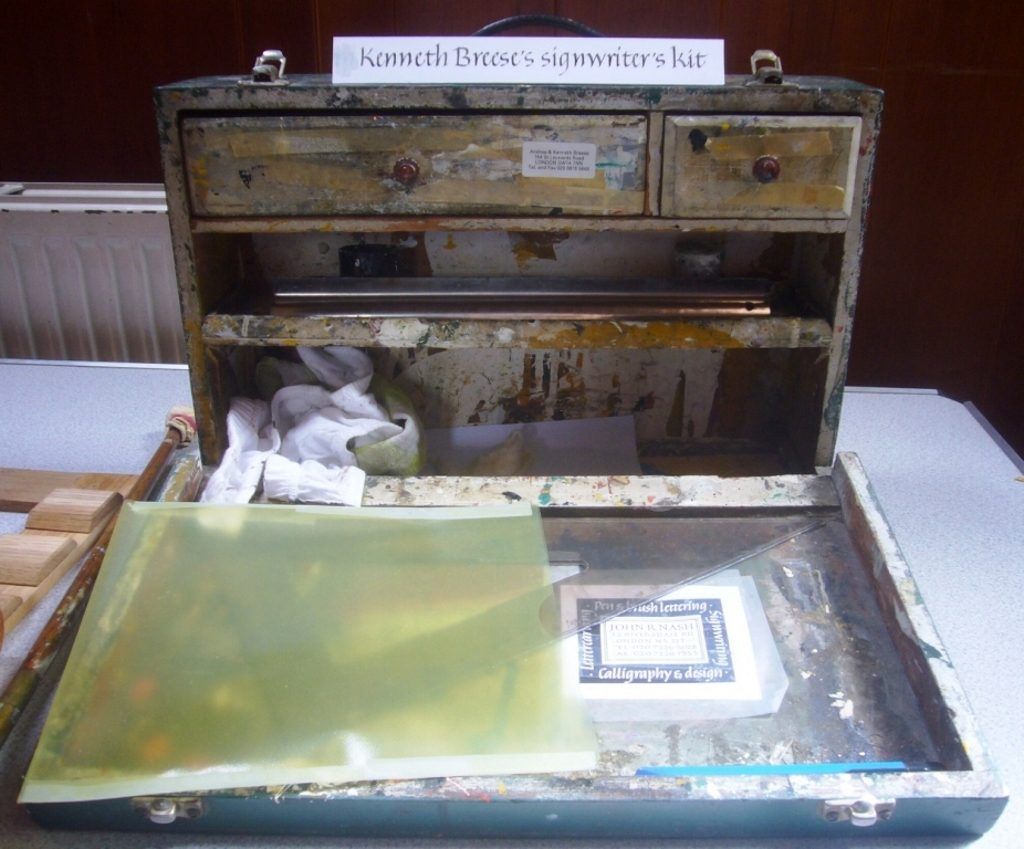

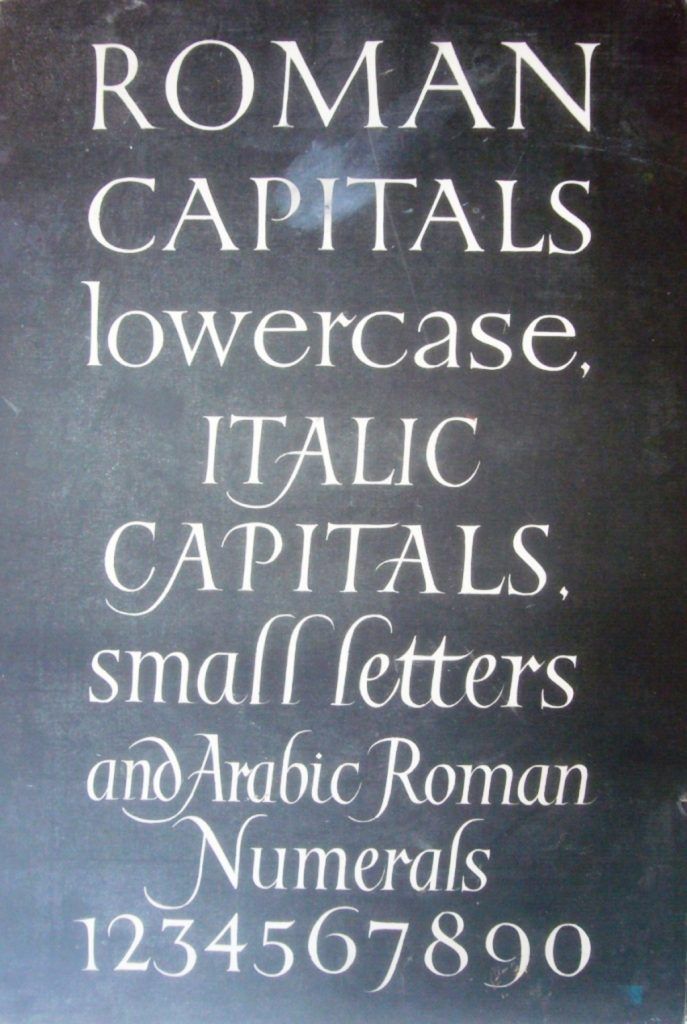
These pieces from Kenneth Breese and William Sharpington were shared by John Nash who, across the weekend, provided a demonstration of his own brush lettering. Below we see the layout and then John at work with mahl stick, palette and brush.
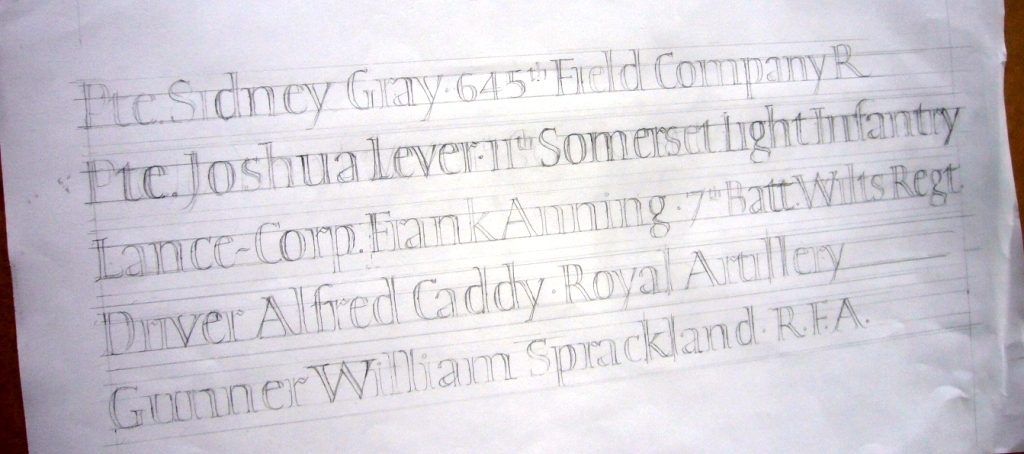

Another item in the Breese/Sharpington display was this photograph which shows Bob Duvivier and Charles Creffield at work on a couple of signs. It is almost certain that the one on the left is for Kingsland Secondary School which is very close to my home in London. (It has since become the Petchey Academy.)

After a hard day’s lettering there’s nothing better than a pint (of delicious Harveys when in Sussex) and some music. This was provided on the Saturday night by some of the attendees and took us on a European tour of various folk music traditions, including Ireland, Italy and Albania.
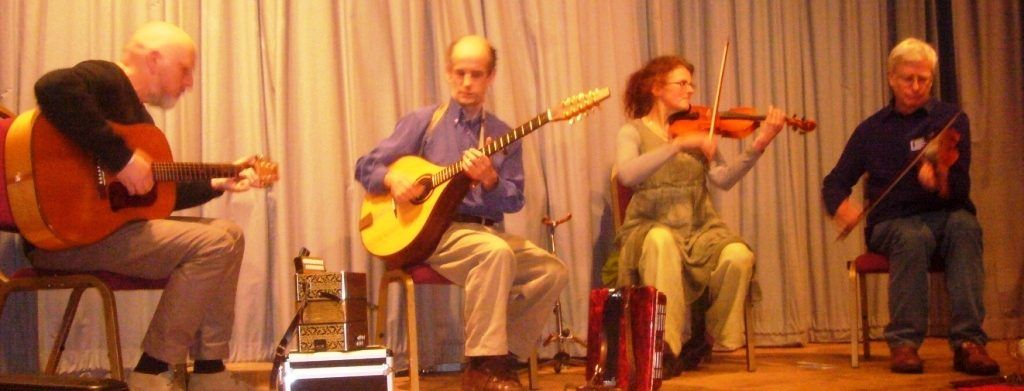
The location of the seminar in Ditchling is due to the fact that this is where Edward Johnston spent most of his working life. The village was at the centre of a revival in the arts and crafts movement and this was brought to life on a walk led by Gerald Fleuss of the EJF.


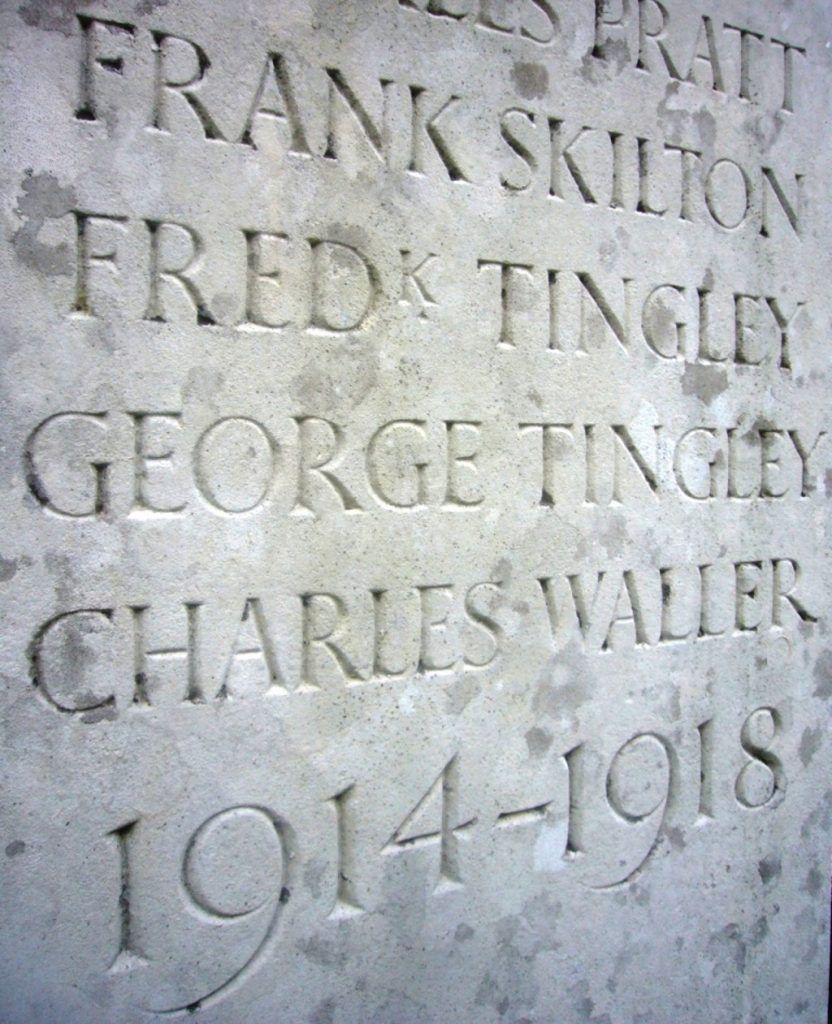

Ditchling was also home to sculptor and type designer Eric Gill. His work can be found in the village and some of it is exhibited in the recently opened Ditchling Museum of Art + Craft. We took a look around the museum which has a fascinating collection of materials, including Edward Johnston’s writing desk.
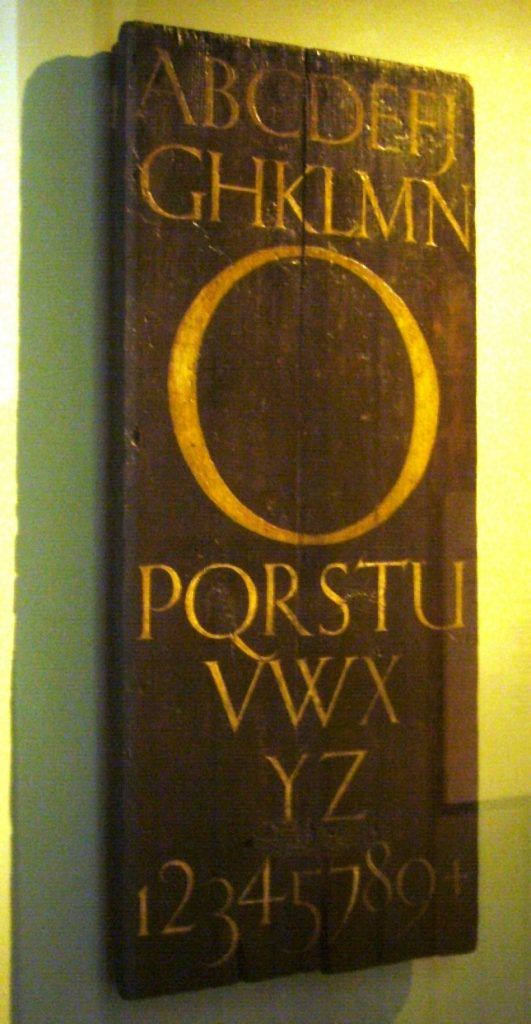



The final day of the seminar featured a whole range of live demonstrations and an opportunity to ask questions and discuss approaches to lettering with various talented artists.

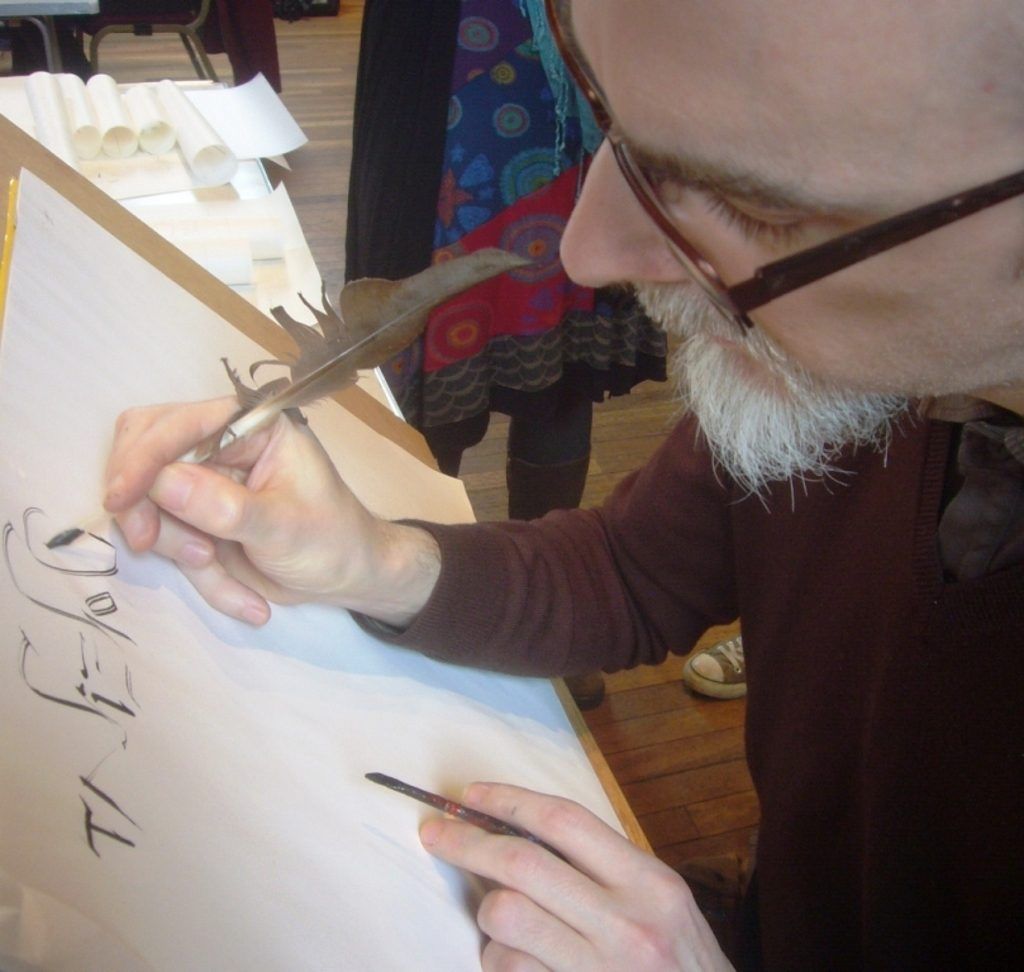
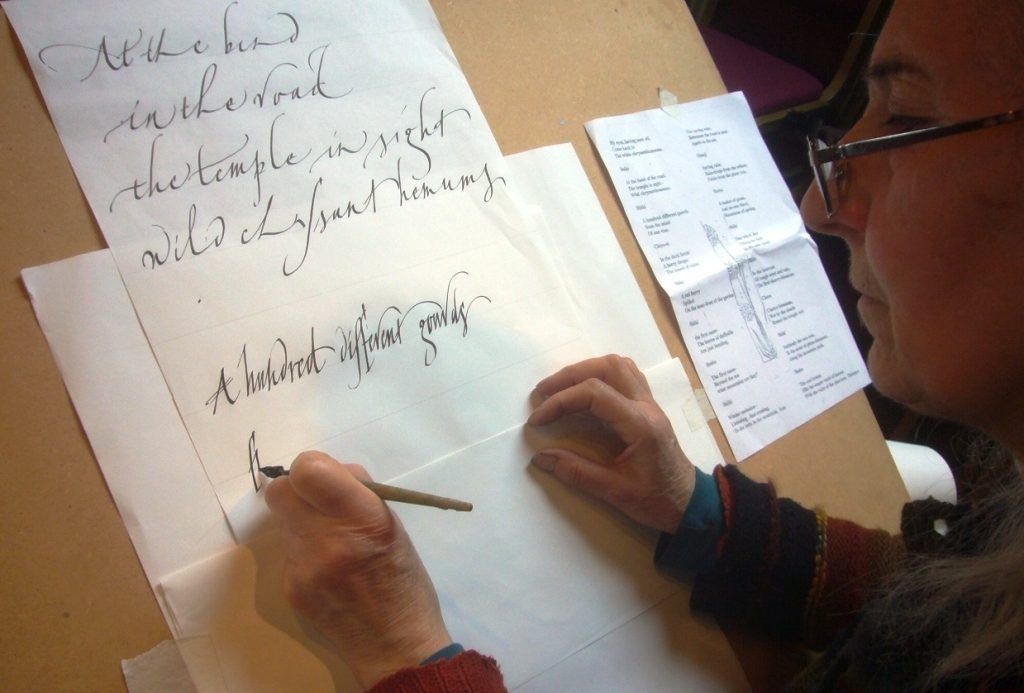
The weekend was a fascinating learning experience and an insight into a culture of lettering distinct from that of the signwriters that I am most familiar with. I left with a copy of The Origin of the Serif by Edward Catich which provides an account of how the roman letters were originally derived from brushed letter forms. Given this shared history, perhaps there is an opportunity to bring the two groups together at future events…
Thank you to Gerald Fleuss and Patricia Gidney for kindly inviting me to speak. I hope to make the next seminar when it comes around.
PS. The book above also poses the theory that letters were cut into stone to give their final painted and gilded forms improved protection from the elements, something that would have prolonged the life of many of today’s ghost signs.
PPS. While in Ditchling I did spot the remnants of one ghost sign, although it has been painted over. It is advertising Thomas Fieldwick‘s business as a grocer and draper.
